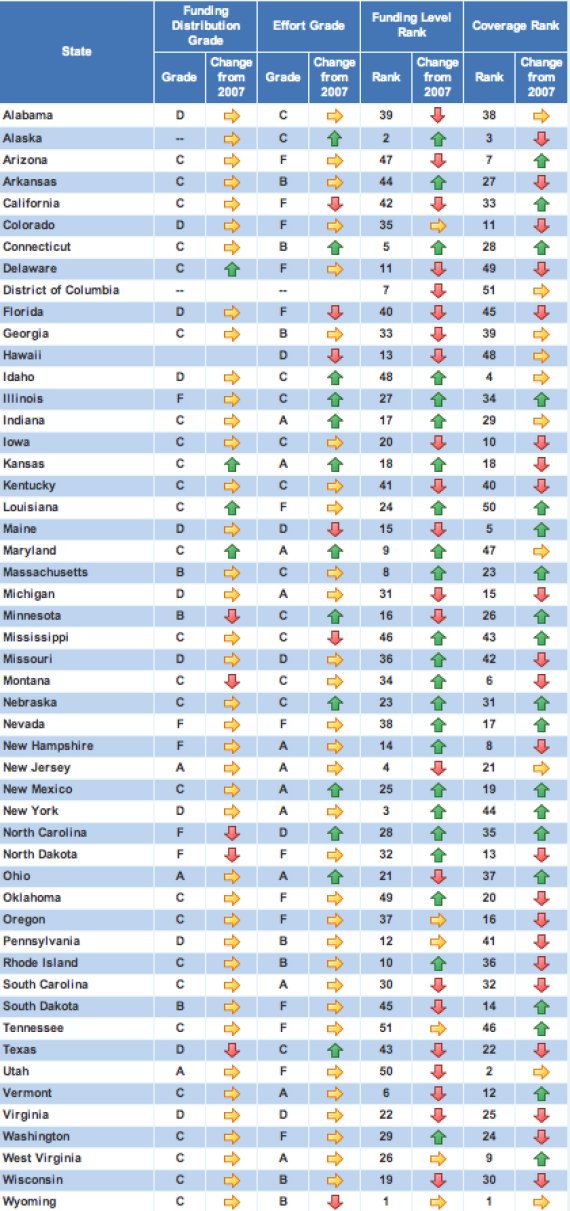
A Tennessee student receives less than 40 percent of the funding received by a similar student in Wyoming, according to a new report that assesses the equity of school funding across the country.
The second edition of the National Report Card, "Is School Funding Fair?", was released earlier this month by the Education Law Center. (See full state-by-state breakdown below, courtesy of the National Report Card).
The report found that only 17 states have progressive funding systems, according to which the state allocates greater funding to districts buckling under poverty. Utah, New Jersey, Ohio, and Minnesota are the most progressive states.
Six states have regressive funding systems, in which richer school districts receive more state dollars. Illinois is the most regressive state, followed by North Carolina, Alabama, Michigan, Texas, and Colorado.
In funding level, the report finds huge disparity. States in the Northeast, along with Wyoming and Alaska, tend to provide far higher levels of school funding than Southern or Western states.
The national average funding level, adjusted for student poverty, regional wage variation and all factors, is $10,774, representing a $642 increase since the 2010 report.
The executive summary of the report defines "fair" school funding as "a state finance system that ensures equal educational opportunity by providing a sufficient level of funding distributed to districts within the state to account for additional needs generated by student poverty."
The report measured state funding systems against four criteria: average level of funding allocated per pupil; funding distribution, or whether funding is progressive, regressive, or flat; effort, as calculated by the ratio of state spending on education to per capita gross domestic product; and coverage, namely, the proportion of school age children enrolled in the state's public school system.
Six states are "positioned relatively well" on all four measures: Iowa, Massachusetts, New Jersey, Vermont, Kansas, and New Mexico. Most states must improve on at least one area, the report concludes.
Each state's performance on funding distribution was distilled to a letter grade from A to F based on the degree to which the state's funding system ensured equal opportunity of education for those in lower income brackets. Three states received As -- New Jersey, Ohio, Utah -- while 11 states received Ds.
A survey published last fall by the Center on Budget and Policy Priorities examined 46 states -- where 95 percent of the country's elementary and secondary students reside -- and found that most states cut state funding for schools last year, and a majority of states are funding K-12 education at levels lower than before the recession, after adjusting for inflation.
Of those studied, 37 trimmed K-12 educational funding since the year before, after adjusting for inflation: 19 of those states cut funding by more than 5 percent.
